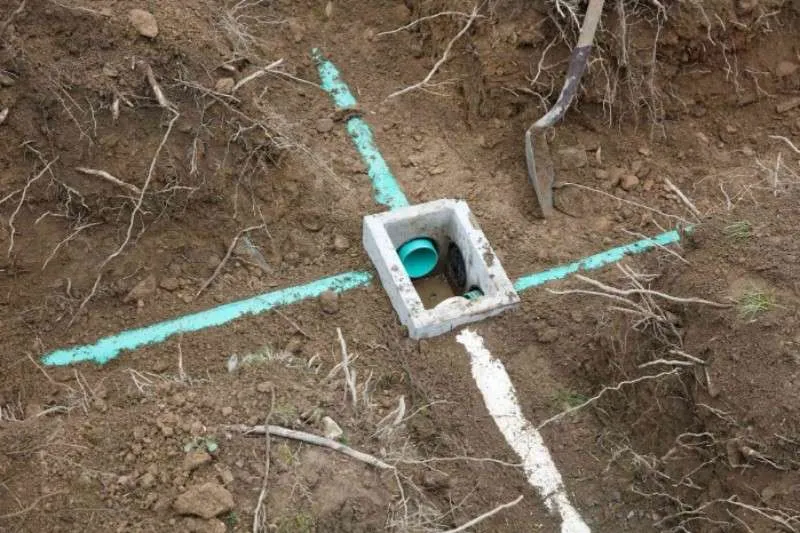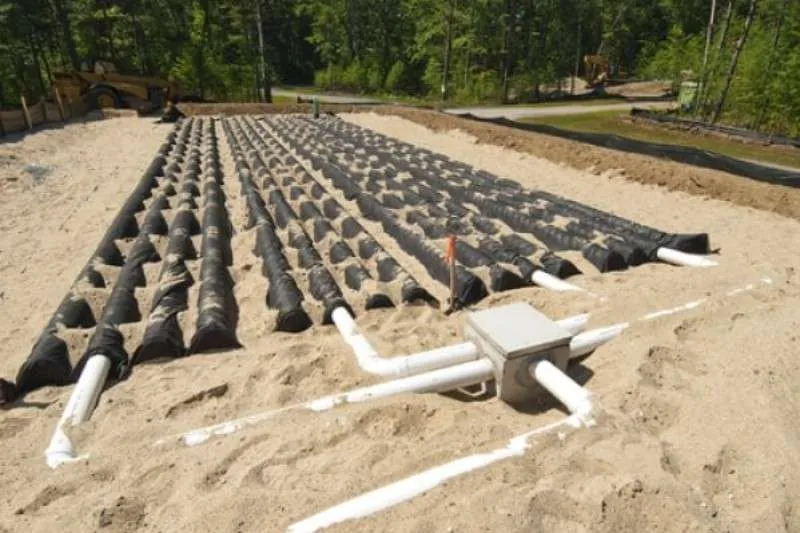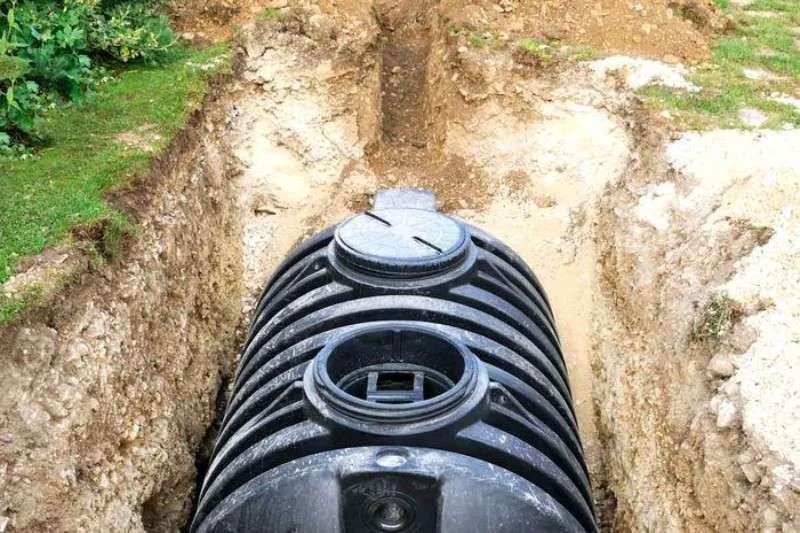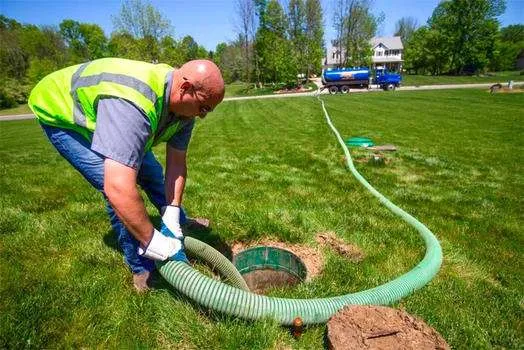Maintaining your leach field is essential to keeping a healthy, functioning septic system. This can be daunting for homeowners who are inexperienced with septic systems, but luckily the process isn’t overly complicated and takes some dedication and know-how to ensure that your leach field serves its purpose in draining waste. Look no further for those looking to learn how to properly maintain their leach fields and prolong their lifespan.
This blog post will cover the basics of setting up and maintaining your leach field, including what it does, how often you need to inspect it, ways to prevent clogging or blockages, proper maintenance tips, and more.
Introduction to leach field maintenance
The leach or drain field is a critical component of any septic system, and its proper maintenance is essential for running your wastewater treatment system smoothly. A leach or drain field, also known as a drain field or seepage bed, is an area where effluent (gray water) from the septic tank can be safely released into the soil to be naturally. Without a functioning leach or drain field, wastewater can come back, and many other system issues can occur.
It’s important to note that the performance of a leach field is largely dependent on conditions underground, where it is harder to monitor and diagnose problems. That’s why regular maintenance of your leach field is so important for keeping it running at its.
The role of the leach field in the wastewater treatment process
The leach field is integral to the household waste’s entire septic system. It serves as the final step in wastewater treatment, allowing the effluent to be naturally filtered through the soil and safely released back into the environment. When a household waste leach field isn’t properly maintained, problems can arise quickly, leading to major issues with your household waste’s entire septic system.
Without a functioning leach field, effluent can return to other septic system parts and eventually into your home or yard. This poses an environmental risk that could contaminate nearby soil and water sources and create unpleasant odors. A clog in the leach field that persists for too long can also lead to a failed septic system.
Ensuring proper leach field design and installation

One of the most important decisions to make when installing a septic system is how to properly maintain your leach field. It’s not just about proper design and installation but also ensuring the necessary steps to ensure its longevity. This includes selecting a leach field location, considering soil type and property size, and ensuring it receives the necessary maintenance.
When selecting a leach field location, surveying the area for potential issues like trees or a high water table is important. If trees are present, they should be removed as the roots of plant trees can disrupt wastewater absorption into the soil. Additionally, if the water table in the surrounding area is too high, the leach field may not be able to absorb wastewater into the soil.
The soil type in the area should also be considered when designing a leach field, as it will determine how well it can absorb the wastewater flows. Sandy soils are better than clay because they allow for more rapid absorption, whereas clay soils tend to be compact and absorb less wastewater flow quickly. Professional guidance is necessary for designing a leach field to choose the right soil type and size for optimal absorption.
Once installed, monitoring the system regularly is important to identify potential issues like tank clogs or blockages. Regular septic tank pumping ensures wastewater can flow freely through the leach field. Building any additions or making changes near the leach field should also be avoided, as this can restrict airflow to groundwater and disrupt absorption.
Maintaining a leach field is an important part of responsible property ownership. Proper design, installation, professional guidance, and regular maintenance are all necessary to ensure it absorbs wastewater effectively. These steps will help ensure your leach field works correctly for years.
Regular leach field inspections
Maintaining your leach field properly is important to ensure it functions properly. Regularly inspecting the leach field is often one of the best preventative measures, as this can allow you to identify potential issues before they become serious or lead to a costly repair. Here are some tips on how to properly maintain your leach field:
1. Regularly inspect your leach field for any signs of damage, such as ponding, odors, or lush vegetation.
2. If you spot any of these issues, schedule a professional inspection to determine the severity and cause of the problem.
3. Pay attention to the amount of water used in the area, and avoid overwatering or excessive water use and usage.
4. Properly maintain your septic tank, as a full or malfunctioning septic tank can cause backups and other issues that may affect your leach field.
5. Avoid driving over the leach field, as this can cause a certain amount of the grass and soil to sink and become compacted, leading to drainage issues.
6. Schedule professional maintenance and inspections for your system regularly (at least once every few years) to identify problems before they become serious.
By following these steps, you can help ensure that your leach field stays in good condition and that your septic service functions properly. Regular inspections and professional maintenance are the best ways to protect your system from major damage or costly repairs, so incorporate them into your routine septic system maintenance plan.
Preventing leach field overloading
You must prevent overloading the system to keep your leach field working properly. To do this, trash can minimize activities that require large volumes of water and reduce the amount of wastewater entering the toilet, sink, and septic tank. You can also opt for water conservation options such as low-flow toilets and showerheads toilet paper.
It is important to avoid overloading your leach field to ensure proper operation. To reduce strain on the system, you can practice water conservation measures such as limiting water usage and taking shorter showers. Additionally, avoid using garbage disposal as this adds more solids into the water entering the toilet and leach field, which can cause clogs.
Lastly, be cautious when using chemicals in your septic system; as they say, harmful chemicals can kill the necessary beneficial bacteria. This can cause clogs, solids buildup, and other problems requiring costly repairs. Only use your septic systems-safe chemicals whenever possible to avoid potential damage to your leach field.
Maintaining your leach field is essential for efficient wastewater treatment in a septic system. Following these tips and using proper maintenance strategies can help ensure your septic service leach field is properly cared for and in optimal condition average household septic system.
Proper landscaping around the leach field
Proper landscaping around the leach field is essential for protecting and maintaining your septic system. Keeping the grass mowed and avoiding heavy vegetation like trees or shrubs will help ensure that the bacteria that break down solid waste already in the septic tank can still reach the leach field area to work effectively. Additionally, it’s important to keep the area around the septic tank pumped and clear of debris.
Choosing appropriate vegetation for the leach field area is also essential to ensure proper maintenance. Care should be taken when selecting plants and shrubs, emphasizing choosing shallow-rooted and drought-tolerant septic service providers. This will help prevent damage to the pipes and drainage systems. Additionally, it’s important to keep the vegetation trimmed so that it does not block or impede the wastewater flow from the waste field.
Finally, it’s to avoid heavy vehicles or structures near the leach field. Driving over a leach field causes irreparable damage to the drainage pipes and soil system. Additionally, it’s not recommended to build or install any structure or large objects over or near the leach field as this will impede its functioning.
In short, proper maintenance of a leach field requires careful landscaping, choosing appropriate vegetation and additional water, and avoiding heavy vehicles or structures on or near the leach field. With these steps, you can help ensure that your leach field remains in proper working order for years.
Addressing leach field issues and repairs

The leach field is an integral part of your septic system, and it’s important to maintain it properly. If not, you could face costly repairs or a complete replacement. In this article, we’ll discuss how to properly maintain your leach field, identify when professional intervention is necessary, and the process of repairing or replacing a leach field.
The first step in properly maintaining your leach field is to ensure you’re not overloading it with too much water. That means monitoring how much water you put into the septic system and diverting or pumping any excess to other parts of your property, such as a dry well or a rain garden. You should also avoid using chemical drain cleaners, damaging the soil and adversely affecting your leach field’s performance.
You may be able to identify problems with your leach field yourself if you watch for certain signs. These include standing water or a foul smell around the area, slow-draining sinks, or sewage backup in your home. If you do notice any of these symptoms, it’s important to call a professional septic contractor as soon as possible.
The process of repairing or replacing a leach field depends on the issue. Sometimes, cleaning out the lines and adding bacteria to break down the organic matter and material may be enough. If the damage is more extensive, you might need to replace parts of the field, such as a tank or distribution box. If necessary, the entire leach field may have to be replaced.
Maintaining your leach field is essential for keeping your septic system functioning properly. These simple tips can extend its life and avoid costly repairs or replacements.
FAQs
Why is leach field maintenance important for my septic system?
Maintaining your leach field is important for keeping your septic system functioning properly. Without proper maintenance, the septic system may be unable to process wastewater efficiently, leading to costly repairs or a complete replacement.
How can proper leach field design and installation affect its maintenance needs?
Proper design and installation of the leach and drain field can significantly reduce the maintenance needed for the drain field over its lifetime. An experienced installer should use appropriate materials, pipe sizes, and grading to ensure the system works efficiently and with minimal maintenance.
What signs should I look for during a leach field inspection?
During a leach field inspection, you should look for signs of standing water or odd odors near the leach field. You should also check for slow-draining sinks or sewage backing up into your home, which could indicate a problem with your septic system.
How can I prevent overloading my leach field?
To prevent overloading your leach field pump, you should monitor how much water is in the system and divert any excess water to other of your property. Also, use chemical drain cleaners as these damage soil and affect your leach field pump.
What landscaping practices are best for maintaining a healthy leach field?
The best landscaping practices for maintaining a healthy leach field are to avoid compacting the soil, keeping runoff away from the area, and planting appropriate vegetation. Avoid putting heavy vehicles or structures on or near the leach field.
Conclusion
All in all, setting up and maintaining your leach field does not have to be overly complicated. With the proper frequency of inspections, being aware of potential preventative clogging or blockages, and following general maintenance tips, you can ensure that your leach field provides the best possible drainage solution for your household. Don’t forget to schedule routine inspections and cleanings with a professional.


